3 Things to Know About Foams & Mousses When Styling Your Natural Hair
In the 7 years that we’ve been present on Al Gore’s Internet, we have watched the growing popularity of styling foams/mousses. While we cannot take credit for the invention of styling foams/mousses, we can without a doubt take full credit for introducing them to the tight curl + natural hair community.
If you’re at all familiar with Black Girl Curls, you know we like to stress the importance of products being tools, and what’s a tool good for if you don’t know how to properly use it? As licensed stylists + educators, we pride ourselves on teaching the tight curl + natural hair community how to effectively and successfully use styling products in their daily routines. This article will explore 3 things to know about styling foams/mousses.
#1: Not All Styling Foams/Mousses Are Created Equal
Hair mousse, also referred to as styling foam, is a styling product that tends to have a lighter consistency than gels. The word “mousse” originates from a French term meaning foam/froth. Like the Marcel curling iron, mousse was originally introduced by the French (L'Oréal) in the early 1980’s. It was later introduced to the US in the late 80’s by TRESemmé. The initial formulation of mousse included alcohol and over the years has later evolved into many alcohol-free formulations promising things like volume, body and shine.
If you’ve read our digital textbook, Wash Your Damn Hair or are a subscriber of our digital course community, The SeeSomeCurls Visual Library, then you know that we provide a curated product list to help naturals take the guesswork out of finding suitable products that “work” for their natural hair.
The two categories of foams we normally use and recommend to our salon and digital clients are volumizing foams and styling foams. Although they both fall within the foam/mousse category, each perform very differently to provide a specific finish. Each formulating category of products has its ideal uses.
#2: It’s Important to Use the Correct Foam For Your Desired Styling Finish
The word “volumizing” in the foam/mousse product category is often a misnomer. They don’t tend to create additional volume but have very light formulations that create hold without weight.
Examples of volumizing foams include AG Hair Natural Cloud Air Light Volumizing Mousse and Innersense Organic I Create Lift Volumizing Foam. We use them alone on clients who have fine loose waves/curls or as a topper for smoothness over gel on our medium to coarse clients.
On the other hand, styling foams are the workhouse of styling foams for professionals. We could literally do everything we needed to do with a styling foam. And even though we aren’t particularly crazy about the new trend of using styling foams for wash and go’s, it can work.
“Although we recognize that the tight curl + natural hair community love the idea of “quick drying sets” with immediate curl definition—repeated use of styling foams not formulated with the intent for wash and go styles can have an adverse effect on the behavior of your hair over time. It’s important when using any styling product to be observant of your hair and its behavior (ie: styles lasting, hair absorbing water, curl definition.)”
Examples of styling foams include The Doux’s Mousse Def and the Nairobi Wrapp It Shine Foam. Styling foams have a heavier effect and stronger hold in their formulation than volumizing foams. They’re used to set twist, rod, braid, roller, and bantu knot sets from wet to dry.
Many are heat activated as well meaning they dry fairly fast under a hood dryer and release more shine on the smoothed surface of the set. Once dry they retain style memory and formation through take down, sleeping, and restyling into ponytails, buns, and puffs without the heavy feeling of product.
#3: Maintaining a Consistent Cleansing Routine Is Key
Like we often mention, it’s important to cleanse, condition and style on a consistent basis to remove any dirt, debris or product build up from the hair. We typically recommend every 7 to 10 days, based on an average lifestyle.
The more often you are cleansing your hair, the less cleansing your shampoo will need to be. Also, how water soluble your products are will determine which category of shampoo would be most effective for your cleansing session.
Just like choosing a shampoo formulation, how many times you shampoo will be determined by the needs of your scalp and hair. Waxy sebum buildup, alternative styling (braids/weaves/crochet) and heavy non water-soluble product usage will likely be a reason to shampoo more than one time. But determine how many times you need to shampoo based on what your hair is doing in the moment. There is no correct number of times to shampoo, just make sure that your hair/scalp is clean whatever you use or how many times you use it.
We’ll be releasing our 2023 Styling + Product Guide very soon! This guide will include an updated comprehensive product list with instructions for how to use them and links for where to purchase, tools such as detangling brushes and hood hair dryers, links to styling videos by licensed professionals + MUCH MORE! Be sure to subscribe to our email list to be the first to know when it’s available to purchase.
Want to learn more about how to properly use the styling products in your closet? We cover all the natural hair fundamentals and more in our digital consumer education platform, The SeeSomeCurls Visual Library.
Our 1.1K+ course community of tight curl + naturals are shaving more than 50% of time off their wash day, being showered left and right with hair compliments, and are receiving direct support of a very encouraging community of tight curlies + naturals who have been exactly where you are.




